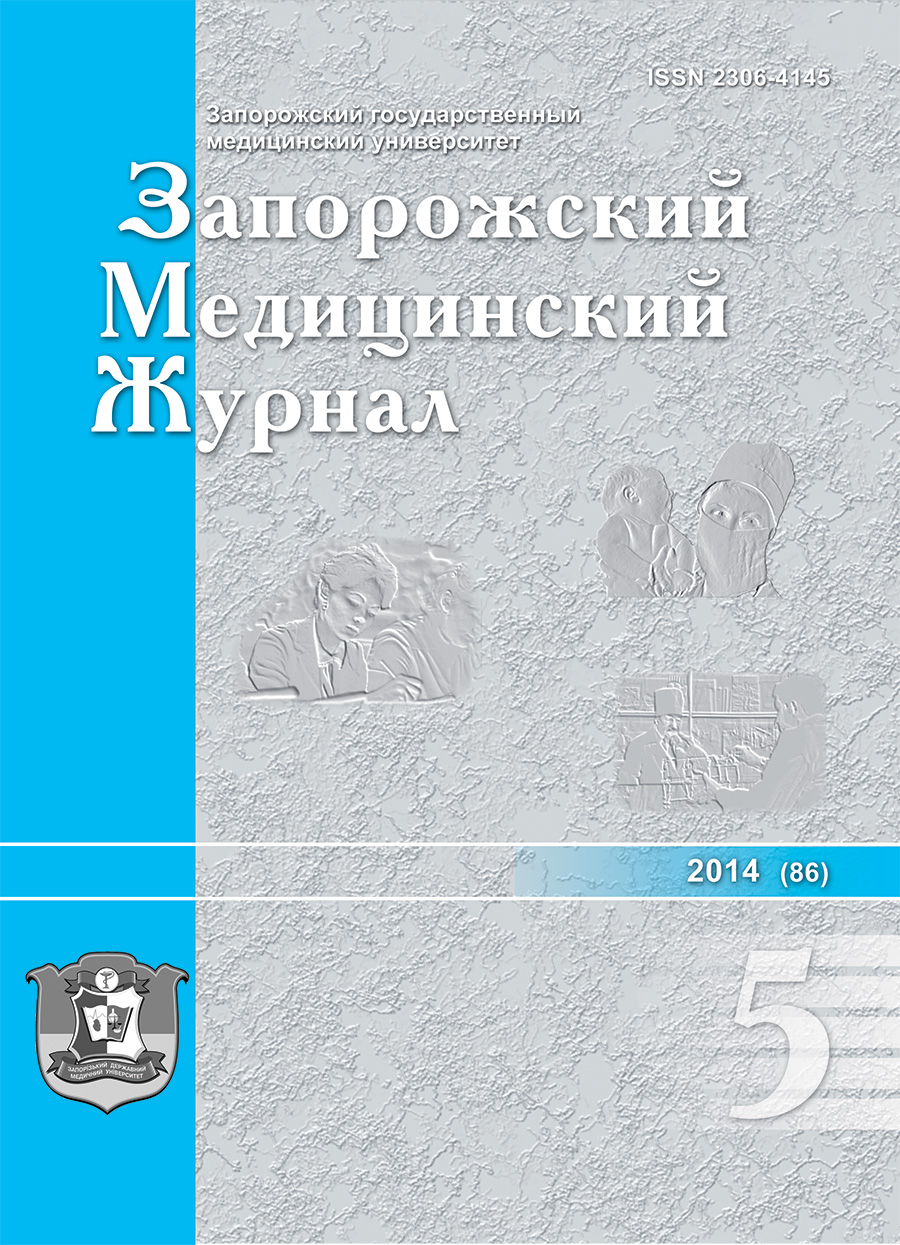Efficiency of the use of an alternating magnetic field and liposomal antibiotic solutions in complex surgical treatment of purulent wounds in children
DOI:
https://doi.org/10.14739/2310-1210.2014.5.28800Keywords:
Supperation, Therapy, Magnetic Field Therapy, Liposomes, SolutionsAbstract
Aim. Results of treatment of 68 patients with purulent wounds of various locations were assessed. Control of wound healing was performed by smears-prints.
Methods and results. Analysis of morphological picture showed that the number of neutrophilic leukocytes in 1–2 day treatment constituted the majority of wound exudate cells. Up to 4 to 5 day treatment the average neutrophil count decreased to 0-50 insight. In specimens from wounds in patients with proposed treatment of macrophages appeared on the 3rd day, in contrast to the control group in which they were largely isolated until the 7th day.
Conclusion. Based on these data, we can assert anti-inflammatory, repair stimulating properties of an alternating magnetic field in combination with liposomal antibiotic solution.
References
Antasarov, E. A., Korabelnikov, A. I., & Ospanov, А. V. (2000) Vliyanie ozona na dinamiku perekisnogo okisleniya lipidov, antioksidantnuyu sistemu, e`ndogennuyu intoksikaciyu u bol'nykh peritonitom [The influence of ozone on the dynamics of lipid peroxidation, antioxidant system, endogenous intoxication in patients with peritonitis]. Abstracts of Papers 2nd All-Russian Conference, (p. 74–75). Nizhny Novgorod. [in Russian].
Belokurov, Ju. N., & Molodkin, V. V. (1995) Ozonoterapiya gnojnykh ran [Ozone therapy of purulent wounds]. Abstracts of Papers 2nd All-Russian Conference. (p. 29–30). Nizhny Novgorod. [in Russian].
Grigoryan, A. Y., Bezhin, A. I., Pankrusheva, T. A., Ivanov, A. V., Zhilyaeva, L. V., Kobzareva, E. V. (2011) Lechenie gnojnykh ran s primeneniem mnogokomponentnykh mazej na osnove e`nterosgelya [Treatment of purulent wounds by using multicomponent ointments based on enterosgel]. Sibirskij medicinskij zhurnal, 12(107), 12–16. [in Russian].
Eryukhin, I. A., Gelfand, B. R., & Shlyapnikova, S. A. (Eds.), (2003) Hirurgicheskie infekcii [Surgical Infection] Saint Petersburg : Piter. [in Russian].
Izmailov, S. G., Beschastnyj, V. V., Botyakov, A. A., et al. (2004) Sposob ocenivaniya processa zagnoeniya gnojnoj rany [Method assess the healing of purulent wounds]. Ambulatornaya khirurgiya, 4, 89–90. [in Russian].
Lutsevich, O. É., Tamrazova, O. B., Shikunova, A. Iu., Pleshkov, A. S., Ismailov, G. I-O., Vorotilov, Iu. V., Tolstykh, P. I. (2011) Sovremennye vzglyady na patogenez i lechenie gnojnykh ran [Pathogenesis of septic wounds]. Hirurgiya, 5, 72–77. [in Russian].
Oborotova, N. A. & Tolcheva, E. V. (2006) Liposomy kak transportnoe sredstvo dlya dostavki biologicheski aktivnykh molekul [Liposomes as vehicles for the delivery of biologically active molecules]. Rossijskij bioterapevticheskij zhurnal, 1, 54–61. [in Russian].
Kurilko, N. L., Kiyamov, A. K., Ivanova, M. A., Pashkov, E. P., Aleksandrov, M. T., Sorokoumova, G. M., & Shvets, V. I. (2009) Dejstvie liposom i liposomal'noj formy ceftriaksona na zazhivlenie kozhnoj rany u krys [Impact of Liposomes and Ceftriaxone-Entrapped Liposomes on Skin Wound Healing in Rats]. Antibiotiki i khimioterapiya, 5–6, 25–30. [in Russian].
Privolnev, V. V., Karakulina, E. V. (2011) Osnovnye principy mestnogo lecheniya ran i ranevoj infekcii [Basic Principles of the Local Treatment of Wounds and Wound Infection]. Klinicheskaya mikrobiologiya i antimikrobnaya khimioterapiya, 3, 214–222. [in Russian].
Verrazzo, G., Coppola, L., & Luongo, C. (1995) Hyperbaric oxygen, oxygen-ozone therapy and reologic parameters of blood in patients with peripheral occlusive arterial disease. Undersea and Hyper-baric Medicine, 22(1), 17–22.
Drosou, A., Falabella, A., & Kirsner, R. S. (2003) Antiseptics on wounds: An area of controversy. Wounds, 15(5), 149–166.
Falanga, V. (2001) The chronic wound: Failure to heal. Cutaneous Wound Healing, 155–164.
Saxena, V. (2004) Vacuum-assisted closure: microdeformations of wounds and cell proliferation. Plast Reconstr Surg, 114(5), 1086–1096.
Downloads
How to Cite
Issue
Section
License
Authors who publish with this journal agree to the following terms:
Authors retain copyright and grant the journal right of first publication with the work simultaneously licensed under a Creative Commons Attribution License that allows others to share the work with an acknowledgement of the work's authorship and initial publication in this journal. 
Authors are able to enter into separate, additional contractual arrangements for the non-exclusive distribution of the journal's published version of the work (e.g., post it to an institutional repository or publish it in a book), with an acknowledgement of its initial publication in this journal.
Authors are permitted and encouraged to post their work online (e.g., in institutional repositories or on their website) prior to and during the submission process, as it can lead to productive exchanges, as well as earlier and greater citation of published work (See The Effect of Open Access)





